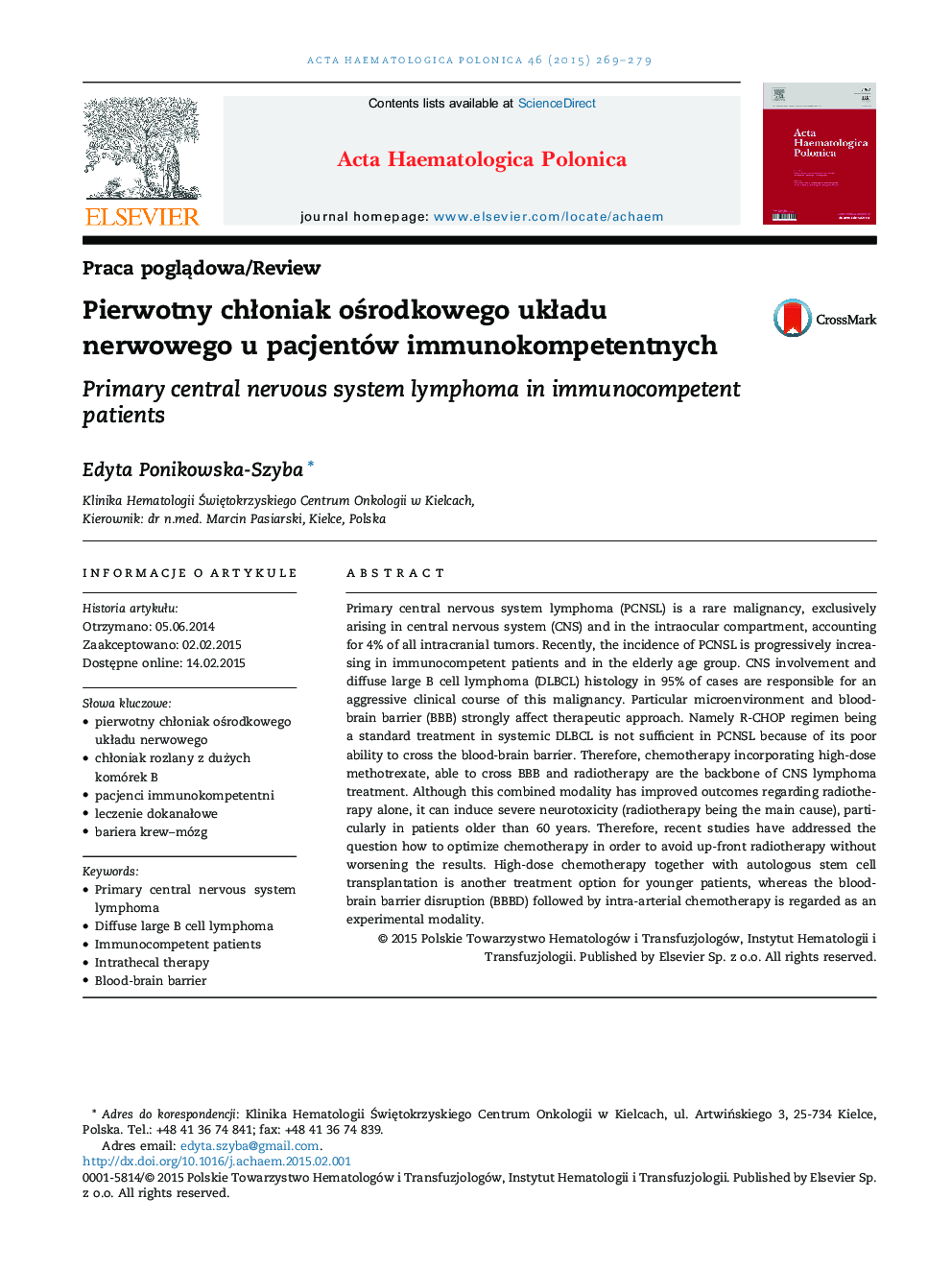| Article ID | Journal | Published Year | Pages | File Type |
|---|---|---|---|---|
| 3328085 | Acta Haematologica Polonica | 2015 | 11 Pages |
Primary central nervous system lymphoma (PCNSL) is a rare malignancy, exclusively arising in central nervous system (CNS) and in the intraocular compartment, accounting for 4% of all intracranial tumors. Recently, the incidence of PCNSL is progressively increasing in immunocompetent patients and in the elderly age group. CNS involvement and diffuse large B cell lymphoma (DLBCL) histology in 95% of cases are responsible for an aggressive clinical course of this malignancy. Particular microenvironment and blood-brain barrier (BBB) strongly affect therapeutic approach. Namely R-CHOP regimen being a standard treatment in systemic DLBCL is not sufficient in PCNSL because of its poor ability to cross the blood-brain barrier. Therefore, chemotherapy incorporating high-dose methotrexate, able to cross BBB and radiotherapy are the backbone of CNS lymphoma treatment. Although this combined modality has improved outcomes regarding radiotherapy alone, it can induce severe neurotoxicity (radiotherapy being the main cause), particularly in patients older than 60 years. Therefore, recent studies have addressed the question how to optimize chemotherapy in order to avoid up-front radiotherapy without worsening the results. High-dose chemotherapy together with autologous stem cell transplantation is another treatment option for younger patients, whereas the blood-brain barrier disruption (BBBD) followed by intra-arterial chemotherapy is regarded as an experimental modality.
